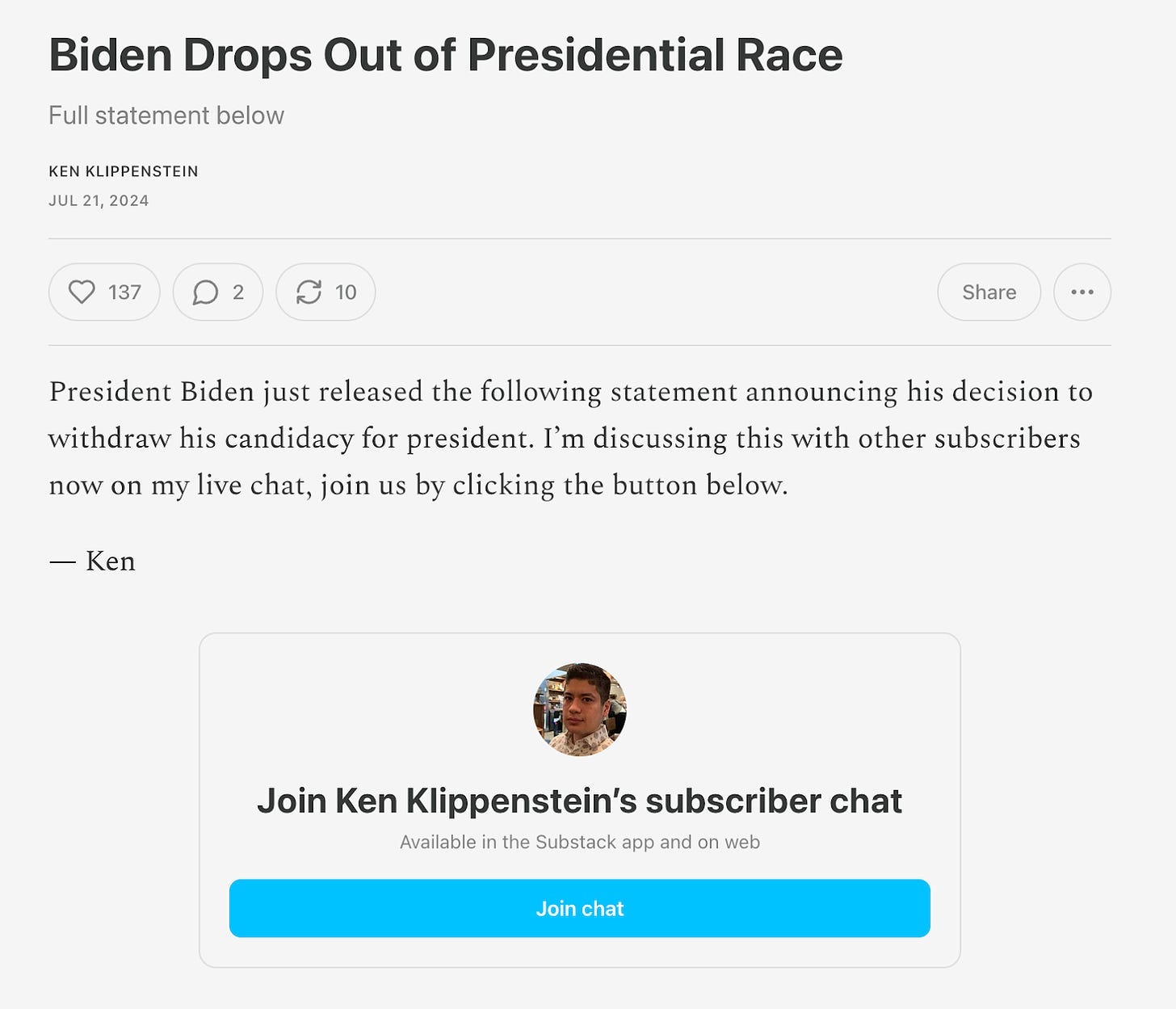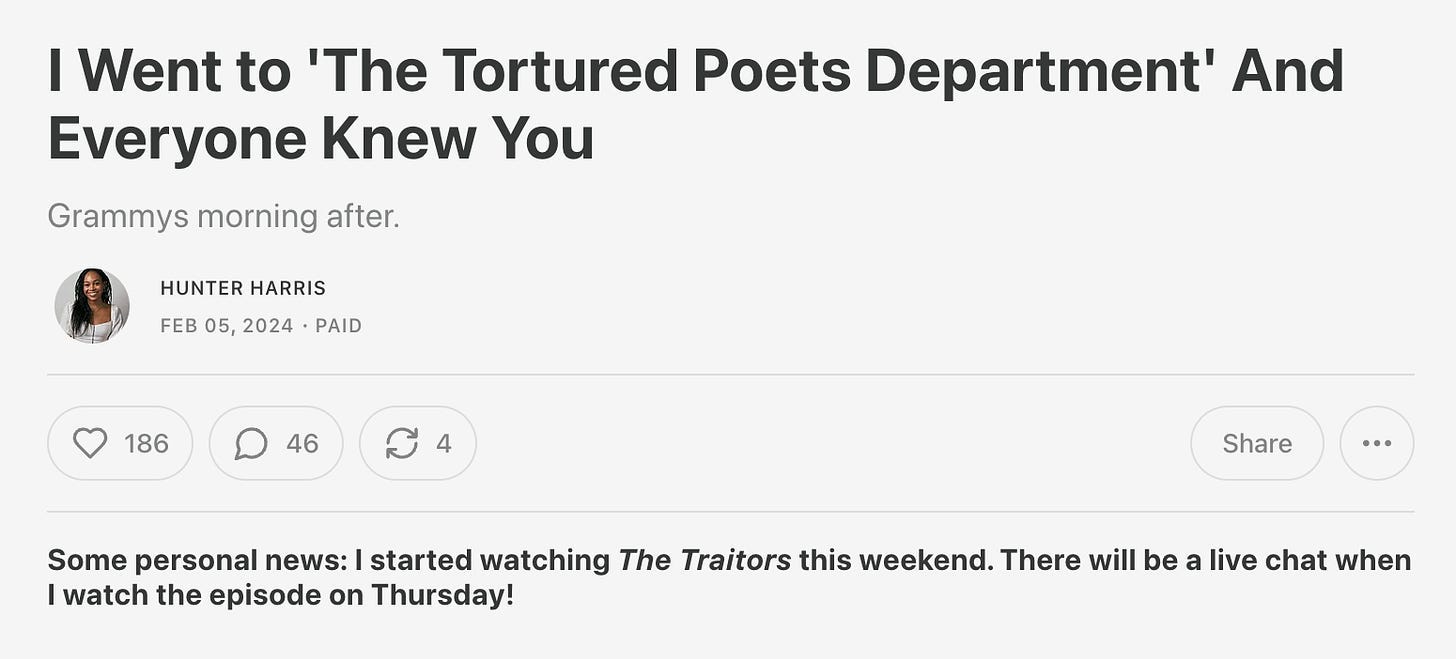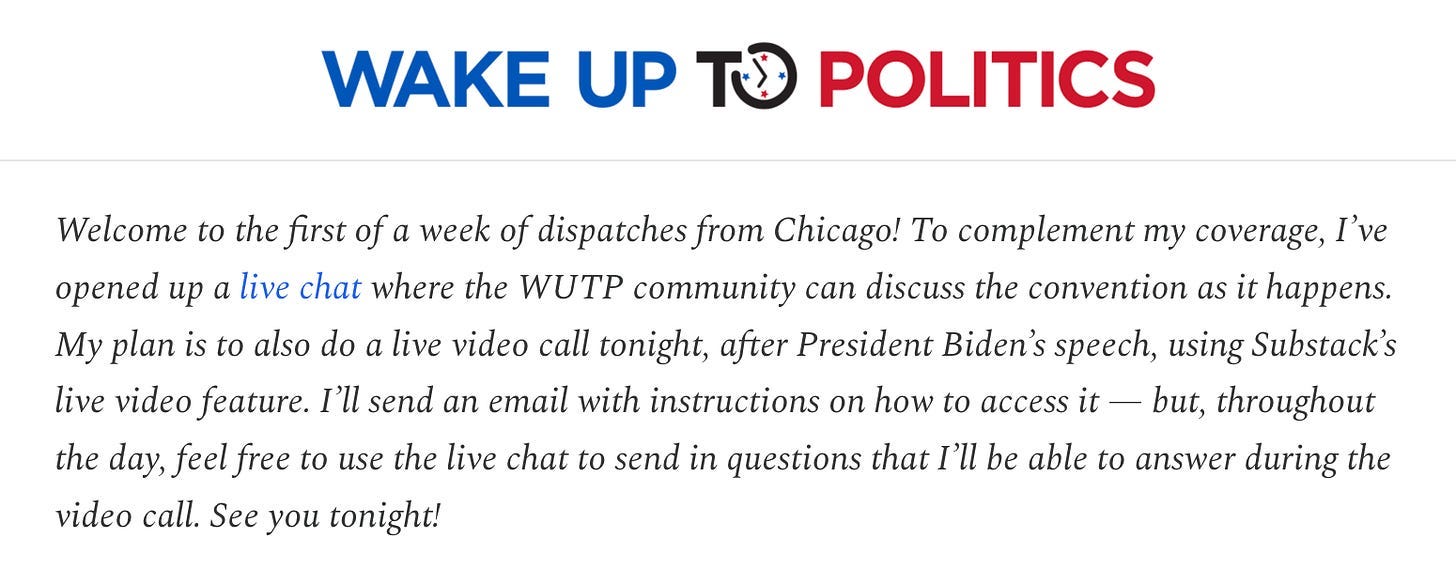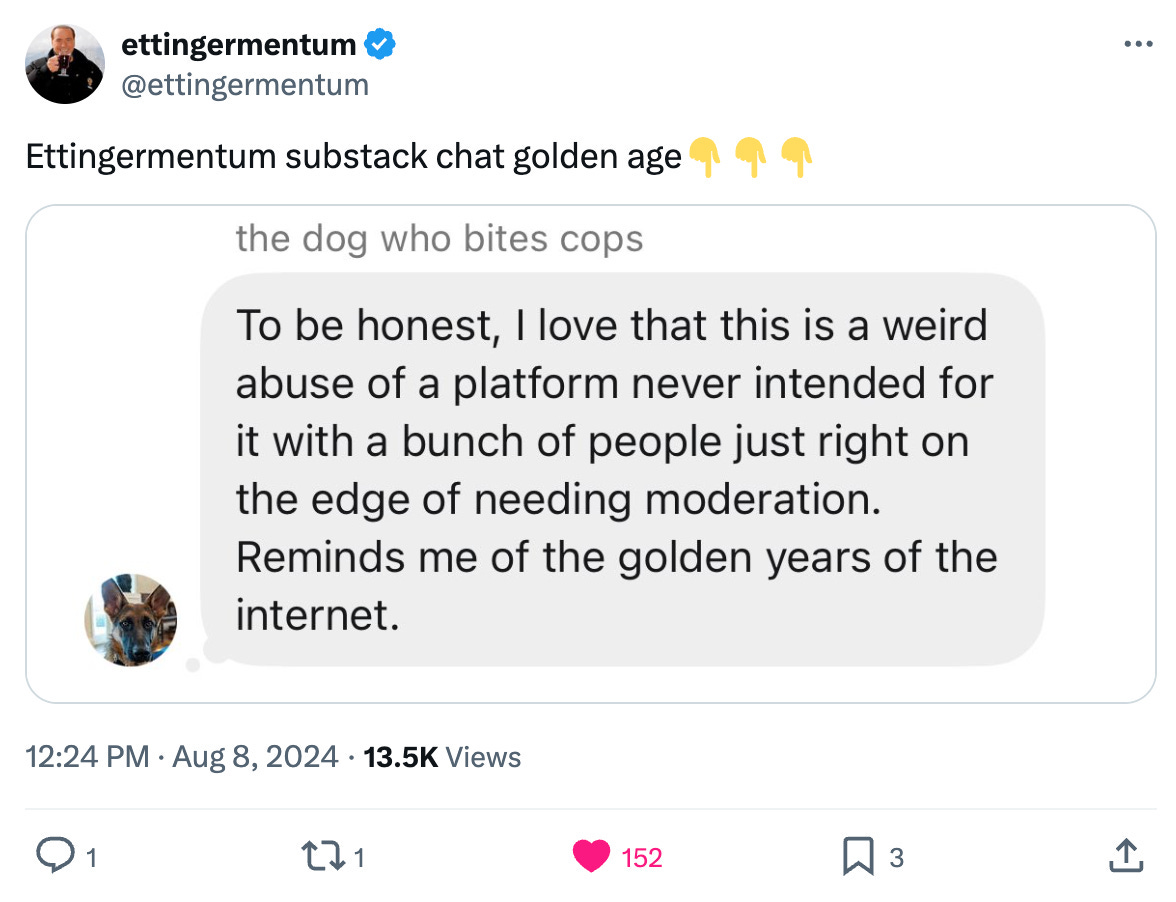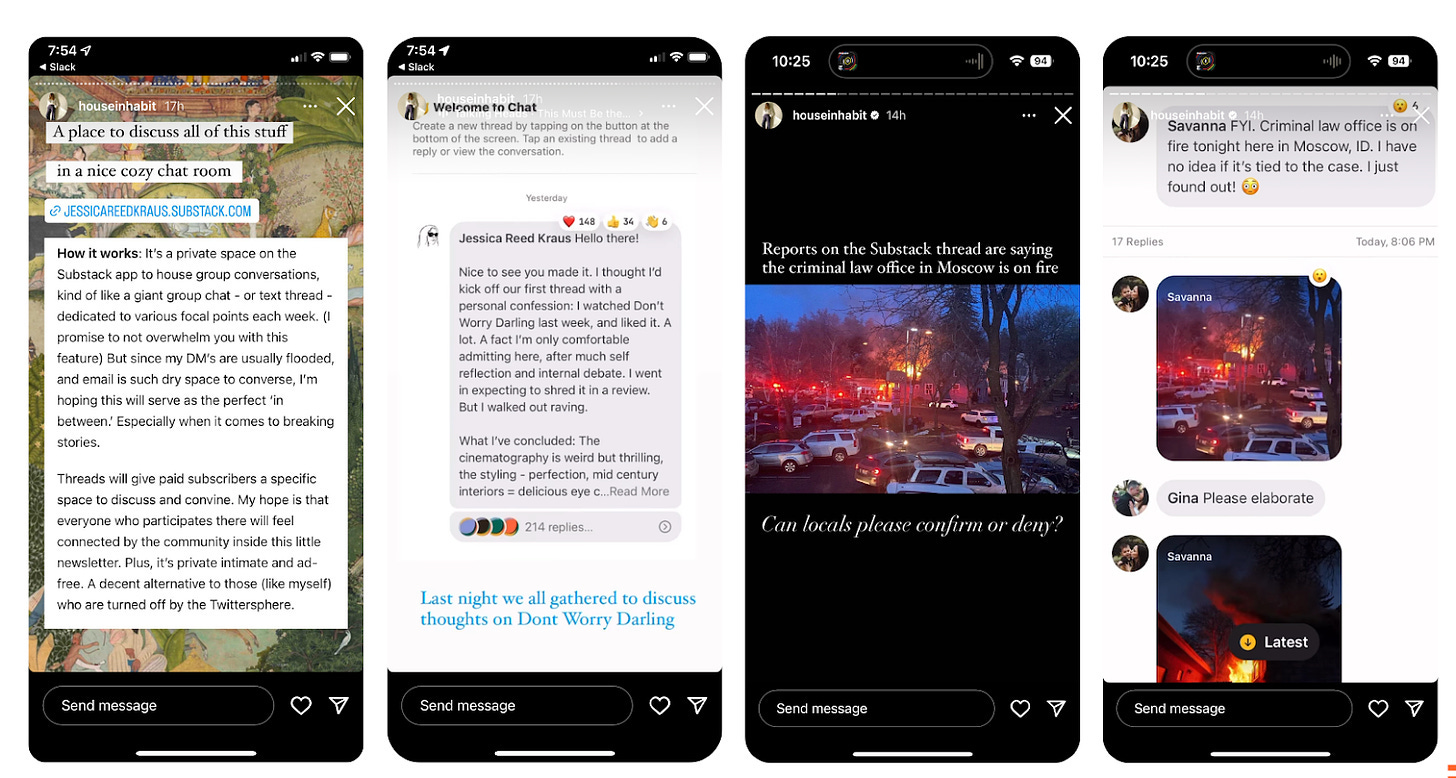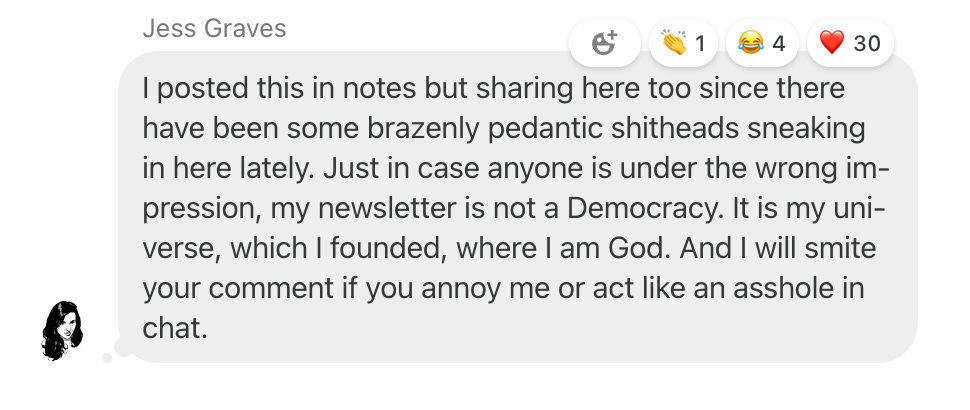Substack Chat is a subscriber-only community where you make the guest list and the rules. Publications with active chats are growing their revenue at twice the rate of publications without them.
Getting started with Chat is simple. Send your first thread and invite your subscribers to participate in a dedicated post.
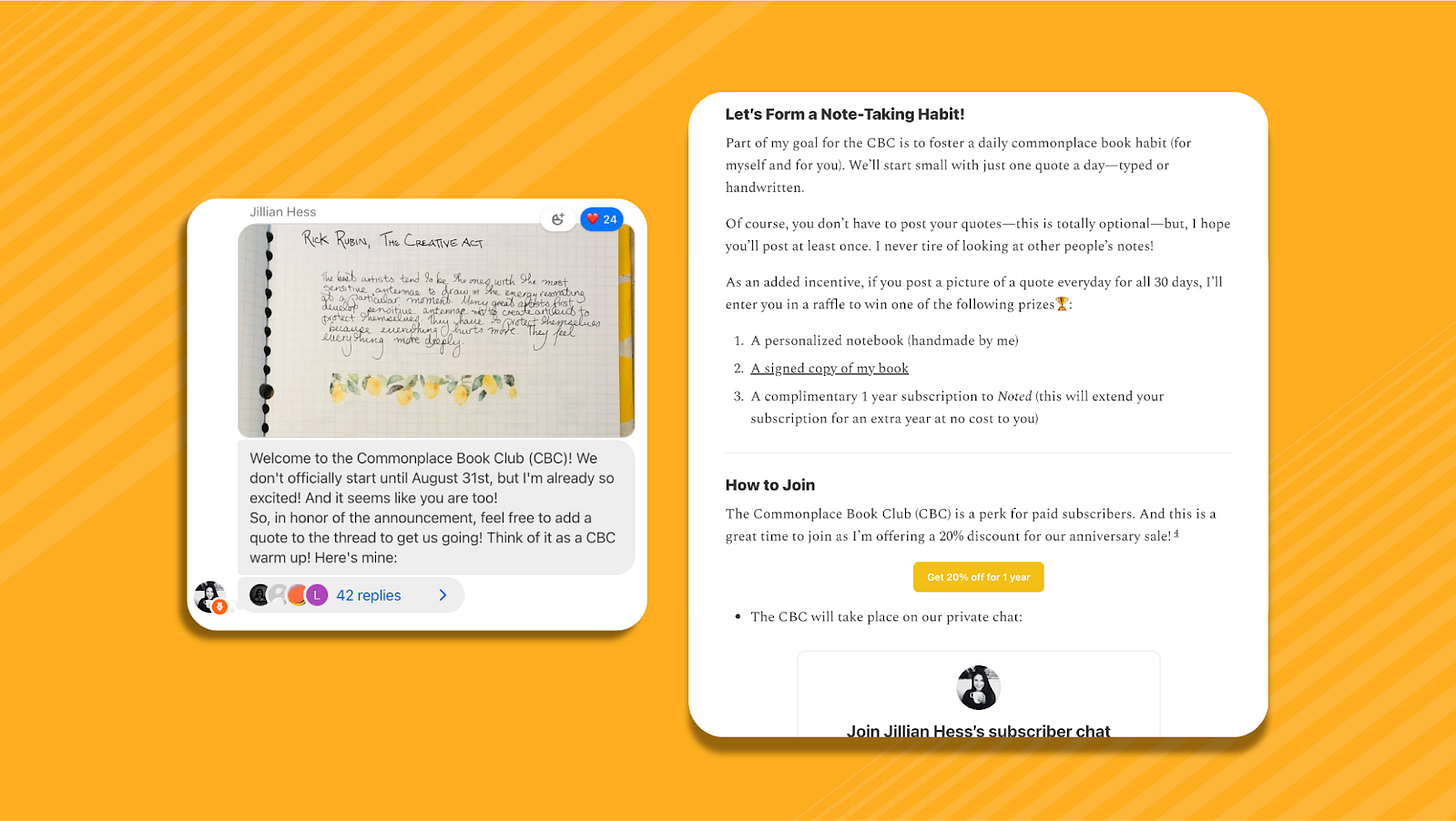
In this guide, we’ll walk you through each step in more detail, including:
How Chat works
Types of Chat
How to announce your Chat
How to promote your Chat
How to moderate and sustain your Chat
If you want to take a deep dive into the principles of community building, visit How to find and engage your readers.
How Chat works
Chat is a closed space: it’s just for you and your subscribers. People who are not subscribed to your publication cannot access your Chat. You can decide whether only paid subscribers or free subscribers can participate in the conversation.
Chat vs. posts: Unlike a post from your publication, chat threads do not send emails by default or appear on your publication homepage. Instead, they trigger a push notification to subscribers.
Chat vs. Notes: Chat is private and just for your subscribers. Notes are public and travel through the Substack ecosystem to help you reach new audiences. One phrase to remember is “Chat for the subs, Notes for the pub.”
Chat vs. comments: Chat threads don’t have to be attached to posts, and conversation can span beyond just the topic of a single post. Chat is more real-time than comments, making it feel more natural for live conversation. Additionally, comments are only text, whereas photos, videos, and text can be sent in Chat.
Types of Chat
Chat offers a lot of flexibility to set it up in a way that engages you and your community. We've seen three popular archetypes of Chat succeed on Substack: subscriber forum, live chat, and club or course. You can choose one main format to kickstart your space or combine them to deepen engagement.
We’ve recorded videos to walk you through strategy recommendations and examples for setting up each type of Chat.
Subscriber forum
The subscriber forum is where your subscribers drive the conversation. Here, they can ask questions, share articles, and talk about their shared interests. They function like a Reddit or Facebook Group.
Examples
Silver Bulletin: Data-driven analysis of elections, media, sports, poker, and more
The Cereal Aisle by Leandra Medine Cohen: Fashion advice
What To Cook When You Don't Feel Like Cooking: Discussions of home cooking
Recommended settings
Publication settings: Allow all paid subscribers to start new threads and send notifications.
Live chats
Chat is designed to feel like a conversation happening in real time. Some publishers start new chat threads to discuss live events as they happen, as you might do in a group chat with friends.
Examples
Hung Up: Breaking celebrity gossip and reality TV and award-show watch parties
Zeteo: Breaking news in politics and major event coverage, like presidential debates
Knicks Film School: Watch parties for basketball games
Recommended settings
Publication settings: Only allow publication contributors to start new threads.
Thread settings: Paywall the thread to paid subscribers only, and send it as an email so people know to join.
Tip: If you are hosting a live chat for a scheduled event like a sports game or presidential debate, send a post to all subscribers a few days before the event so they can upgrade to join or put it on their calendar.
Class or course
Chat can be a venue for hosting a regularly scheduled activity as a subscriber benefit. This can be lightweight, like a weekly prompt to share what you’ve been watching, or it can be a bigger investment to go deep with your community, like a book club where you discuss a chapter of the book week by week.
Examples
DrawTogether: Monthlong art challenge with daily prompts
Footnotes and Tangents: Book club with daily threads to discuss each chapter
The Reveal: Weekly prompt to share what movies you’ve watched
Recommended settings
Publication settings: Consider paywalling the whole Chat to make the course or club a paid benefit. This means that when a free subscriber lands on the Chat space, they will immediately be prompted to upgrade. You can either restrict the ability to start new threads to just contributors or allow all paid subscribers to do so.
Announce your Chat
The most important part of launching your chat is emailing a dedicated announcement post to your subscribers. We’ll notify your readers via email when you post your first chat, and only your first chat, but it’s always better for them to hear in your own voice about why you’re doing this.
We’ve added a chat announcement template to your post drafts that you can edit and publish directly. In your post, be sure to include:
Instructions to join your chat, with a “Get the app” and/or “Visit my chat” button near the top (these can be found in the Buttons menu).
What you hope to do together and how your chat conversations might differ from other spaces, like social media. If you are letting subscribers start chat threads, be sure to let them know!
Great examples of announcements from other writers include:
Zeteo: Live chat
DrawTogether: Course or club
JoeBlogs: Subscriber forum
We recommend sending this announcement right after you start your first chat so subscribers immediately have something to reply to. Simply copying and pasting a chat link into a post will also generate a preview of your chat.
Promote your Chat
After your initial Chat announcement, continue reminding your subscribers about the Chat community as one of their subscriber benefits. Plus, you’ll want to let followers on other platforms know what they are missing out on if they haven’t yet subscribed to your Substack.
Remind your subscribers
Include buttons or embeds at the top or bottom of your regularly scheduled posts, welcome email, and About page to give subscribers a sense of what they’re missing out on. Two simple ways to do this:
Chat buttons: In any post, you can add a “Join the chat” button that takes subscribers directly to your Chat.
Chat embeds: Copy a link to any Chat thread and embed it in a post to subscribers.
Here are a few great examples:
Promote on social
Make sure people who are not yet subscribed to your publication also know what they are missing out on. Share screenshots or screen recordings of your Chat to Twitter, Instagram, and Notes. Community might be what converts your followers on other platforms into subscribers on Substack.
Here are a few examples of promotion:
Sustain and moderate your Chat
In the first few weeks, you’ll set norms and build a habit among your subscribers. Up front, investing some time in Chat to answer questions and set the tone can go a long way. Notice the people who keep showing up, and acknowledge their contribution.
Over time, your subscribers can become the leaders who drive the conversation and sustain the space independently of you. Many writers with active “subscriber forums” only participate once a week.
Regarding moderation, remember that Chat is your space, and you set the rules.
Jess Graves said it best:
Moderation tools allow you to block or ban users, delete any reply or thread, and report users to Substack. Paywalls are also a powerful moderation tool. Most people won’t “hate pay” just to show up and troll a community. Additionally, you can turn off replies to a thread when you’re finished to help manage your time or signal the end of a live event.
Key takeaways
Chat is your space, where you make the rules.
If you’ve never done Chat, try an introduction thread to start, and encourage people to introduce themselves with a relevant prompt. There’s no cost to getting to know your subscribers better!
If you’ve hosted a Chat before, take this as a chance to reflect on your intentions: What kind of space do you want to create? Then, scope a plan to reintroduce your Chat to subscribers—it’s never too late to relaunch.
We’re eager to hear what you learn by hosting a Chat. Let us know!
If you have questions about Chat, visit our Chat FAQ.
If you want to take a deep dive into the principles of community building, visit How to find and engage your readers.
Guide last updated September 9, 2024.







